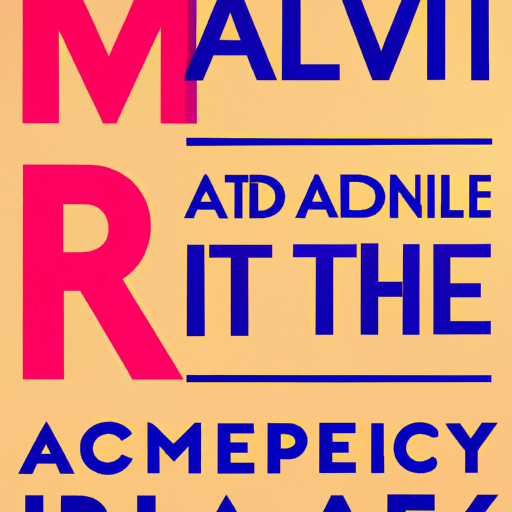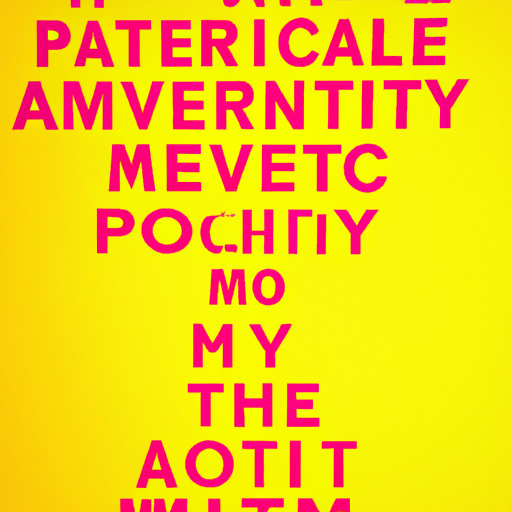
-
Table of Contents
- Kinetic Typography: Adding Movement to Text-Based Designs
- What is Kinetic Typography?
- The Benefits of Kinetic Typography
- Examples of Kinetic Typography in Action
- Example 1: “The Power of Words” by Andrea Dorfman
- Example 2: “The Girl Effect” by The Nike Foundation
- Effective Use of Kinetic Typography
- Conclusion
Kinetic Typography: Adding Movement to Text-Based Designs

Typography is an essential element in design, allowing designers to convey messages and evoke emotions through the arrangement and style of text. However, traditional static typography can sometimes lack the impact needed to capture and hold the viewer’s attention. This is where kinetic typography comes into play. Kinetic typography adds movement and animation to text-based designs, creating a dynamic and engaging visual experience. In this article, we will explore the concept of kinetic typography, its benefits, and how it can be effectively used in various design contexts.
What is Kinetic Typography?
Kinetic typography, also known as motion typography or animated typography, is the art of animating text to create visually appealing and dynamic designs. It involves adding movement, transitions, and effects to individual letters, words, or phrases, transforming static text into an animated visual experience. Kinetic typography can be applied to various mediums, including videos, websites, presentations, and advertisements.
The Benefits of Kinetic Typography
Kinetic typography offers several benefits that make it a powerful tool in design:
- Enhanced Visual Appeal: By adding movement and animation, kinetic typography grabs attention and creates a visually captivating experience. It helps to convey messages in a more engaging and memorable way.
- Improved Information Retention: Studies have shown that animated text is more likely to be remembered compared to static text. The movement and transitions in kinetic typography help to reinforce the message and improve information retention.
- Emotional Impact: Kinetic typography allows designers to evoke emotions through the use of appropriate animations and effects. It can enhance the tone and mood of the message, making it more impactful and relatable to the audience.
- Storytelling Potential: With kinetic typography, designers can bring text to life and create narratives through the animation. It enables the text to become an integral part of the storytelling process, enhancing the overall message and engagement.
Examples of Kinetic Typography in Action
Let’s explore some real-world examples of kinetic typography to understand its application and impact:
Example 1: “The Power of Words” by Andrea Dorfman
In this short animated film, Andrea Dorfman combines hand-drawn illustrations with kinetic typography to convey the power of words. The text animates and interacts with the illustrations, creating a visually stunning and emotionally resonant experience. The movement of the text adds depth and meaning to the message, making it more impactful and memorable.
Example 2: “The Girl Effect” by The Nike Foundation
The Nike Foundation’s “The Girl Effect” campaign utilizes kinetic typography to raise awareness about the importance of investing in girls’ education. The animated text, combined with powerful statistics and visuals, creates a sense of urgency and highlights the potential impact of empowering girls. The movement of the text reinforces the message, making it more compelling and persuasive.
Effective Use of Kinetic Typography
When incorporating kinetic typography into designs, it is important to consider the following tips:
- Focus on Readability: While animation adds visual interest, it should not compromise the readability of the text. Ensure that the text remains clear and legible throughout the animation.
- Align with the Message: The animation should align with the tone, mood, and message of the text. Consider the emotions you want to evoke and choose animations and effects that enhance the overall impact.
- Use Timing and Transitions: Timing is crucial in kinetic typography. The movement and transitions should be synchronized with the rhythm and flow of the text. This creates a seamless and harmonious visual experience.
- Experiment with Effects: Kinetic typography offers a wide range of effects and techniques. Experiment with different animations, transitions, and typography styles to find the ones that best complement your design.
Conclusion
Kinetic typography is a powerful tool that adds movement and animation to text-based designs. It enhances visual appeal, improves information retention, evokes emotions, and enables storytelling. By incorporating kinetic typography effectively, designers can create engaging and memorable experiences that leave a lasting impact on the audience. Remember to focus on readability, align the animation with the message, use timing and transitions effectively, and experiment with different effects to create visually captivating designs. Embrace the power of kinetic typography and elevate your text-based designs to new heights.
